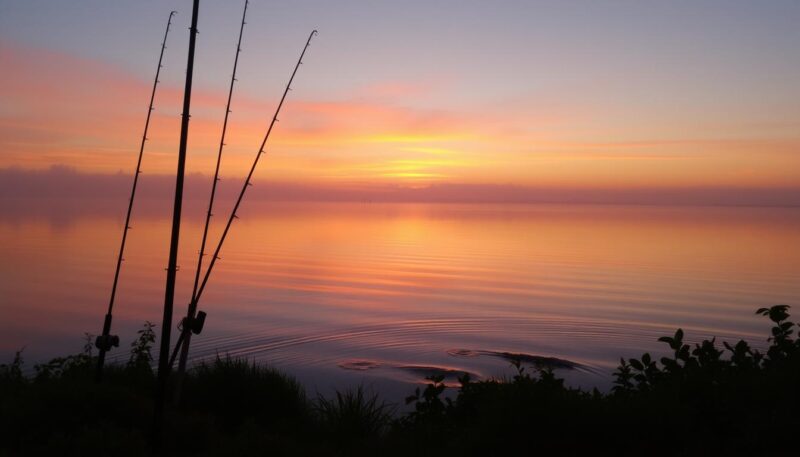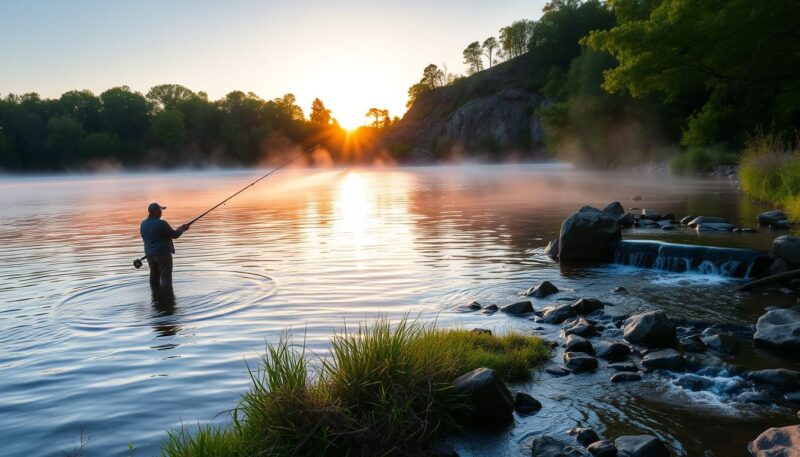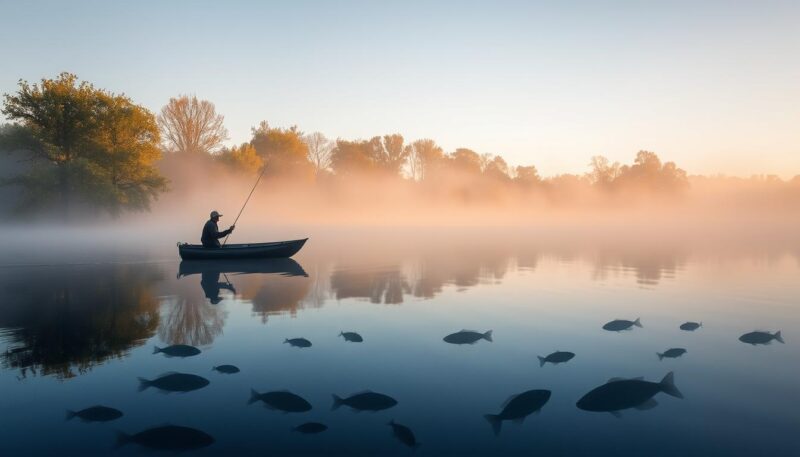Deciding when to cast your line can significantly impact your success as an angler. Understanding the best time of day to go fishing is not just about luck; it hinges on various environmental factors and the natural behavior of fish. By paying attention to their patterns, you can transform an ordinary day on the water into an unforgettable experience filled with bites. This article will delve into the nuances of fish behavior throughout the day and identify the prime fishing times, empowering you to maximize your catch.
When considering the best time to fish, it’s essential to recognize that fish tend to be more active at specific periods, particularly during the early morning and late evening. However, this doesn’t mean you should discount other times. Factors such as weather conditions, water temperature, and seasonal changes play a pivotal role in influencing fish activity. By consulting local fishing calendars, engaging with experienced anglers, and keeping an eye on the changing conditions, you can align your fishing trips with optimal feeding times for different species.
Understanding Fish Behavior Throughout the Day
Fish behavior is influenced by various factors throughout the day. Recognizing these influences can enhance your approach to fishing during the day, ultimately leading to more successful outings. By understanding how fish react to environmental changes, you maximize your chances of landing a catch at the best fishing hours.
Factors Influencing Fish Activity
Multiple elements dictate fish activity levels. The water temperature, sunlight intensity, and weather conditions significantly impact when fish feed. Consider the following observations for fishing based on time of day:
- Fish often feed near the surface during low light conditions, especially in the early morning or late afternoon.
- In spring, cold water temperatures may reduce fish feeding activity during the early morning hours.
- Summer fishing is typically most effective before sunrise, allowing anglers to avoid extreme heat.
- The fall season may see fish active in the afternoon or early evening as conditions warm up just before dusk.
- Spawning seasons draw fish into groups, making them easier to locate.
Cold-Blooded Nature of Fish
As cold-blooded creatures, fish regulate their body temperatures according to surrounding water temperatures. This characteristic influences their feeding and breeding habits, essential knowledge for effective fishing seasonal timing. For example, during hot months, fish may dive deeper into cooler waters, while warming temperatures in colder months may prompt them to become more active.
Use the following insights to refine your fishing strategy:
| Season | Optimal Fishing Times | Notes |
|---|---|---|
| Spring | Late Morning to Early Afternoon | Fish may be inactive in early morning due to cold water temperatures. |
| Summer | Early Morning and Before Sunset | Best fishing often occurs in cooler temperatures. |
| Fall | Afternoon to Early Evening | Fish transition to warmer waters as the sun sets. |
| Winter | Late Morning to Early Afternoon | Fish are less active and more sensitive to temperature changes. |
The Best Time of Day to Go Fishing
Understanding the optimal times to cast your line can greatly enhance your fishing success. Different times of day offer unique opportunities for various species. Knowing when to be out on the water allows you to better plan your fishing trips and improve your chances of landing a big catch.
Morning Fishing: Prime Opportunities
Morning fishing tips suggest targeting the early hours, especially just before and after sunrise. During this period, fish are generally more active as cooler temperatures push them closer to the surface. Spring mornings are particularly productive, with species like bass and trout showing high feeding activity. Additionally, consider using daily fishing forecasts to maximize your efforts during those best fishing hours.
Midday Fishing: What to Expect
Fishing during the day poses certain challenges, as heat causes fish to retreat to deeper, cooler waters. While midday can be less favorable for fishing, it’s still possible to find success. Anglers should focus on shaded areas or deep holes where fish may congregate. Notably, conditions like cloud cover or light rain can revitalize fish activity, which is a prime opportunity for those fishing at this time.
Evening Fishing: The Golden Hours
Fishing at dusk, particularly during the golden hours just before sunset, presents an excellent opportunity for anglers. The cooling waters rejuvenate fish activity, often leading to increased bites. Species such as walleye and catfish become more active, making evening fishing tips worth considering. The time just before darkness truly enhances the likelihood of a successful catch.

| Time of Day | Best Fishing Conditions | Target Species |
|---|---|---|
| Early Morning | Active feeding, cooler temperatures | Bass, Trout |
| Midday | Fish in deeper waters, possible cloud cover | Pike, Catfish |
| Evening/Dusk | Cooling waters, high activity | Walleye, Catfish |
Best Time of Day to Go Fishing for Different Species
Understanding the best times to fish for bass, trout, and other species can significantly enhance your fishing experience. Each species has its unique feeding patterns and preferences, adapting to various environmental conditions. By mastering these patterns, you can improve your chances of a successful catch.
Fishing for Bass
The best time to fish for bass typically occurs during the early mornings and late afternoons. During these cooler periods, bass tend to gravitate toward structures and cover near shorelines, making them easier to catch. Factors such as cloudy days or pre-storm conditions can ignite a feeding frenzy, providing an excellent opportunity to reel in your prize.
Best Times for Trout Fishing
When seeking the best time to catch trout, early mornings and late evenings shine as prime periods. Trout prefer cooler, oxygen-rich waters, which make spring and fall particularly rewarding seasons for anglers. Conditions such as water temperature and stream flow also play a crucial role in trout activity. Local knowledge about these factors can greatly enhance your fishing for different species.
Targeting Other Species
Different species present varied feeding habits throughout the day. For example, catfish are most active during overcast conditions and at night. Understanding the unique characteristics of each species enhances your strategy, ensuring that your fishing experience remains exciting and productive.

Conclusion
Recognizing the best time of day to fish is a crucial aspect of enhancing your fishing experience. Each fish species operates on distinct feeding patterns influenced by various environmental factors, primarily the seasonal changes and water conditions. For instance, trout are especially active in the spring and summer, feeding vigorously in the early mornings and evenings when insect hatching peaks. This illustrates the need for anglers to align their fishing trips with these optimal times to increase their chances of a successful catch.
Investing in resources such as fishing calendars and leveraging local fishing tips can provide valuable insights into the prime feeding windows throughout the year. Understanding fish behavior not only improves your strategy but also helps in making the most out of your time on the water. Remember, while early mornings are great for catching fish, especially during warmer months, mid-day fishing can still yield significant results, particularly when utilizing techniques tailored for deeper waters.
Ultimately, the journey of fishing is not just about the catch, but also about the connection with nature and the thrill of waiting for that first bite. Armed with knowledge about the best times to fish and effective fishing tips for all-day fishing, you can maximize both your enjoyment and success on the water.

